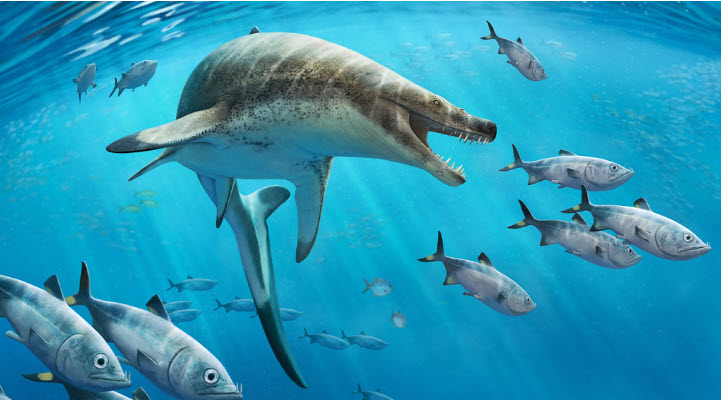Ancient Giant Sea Lizard Had Dagger-Like Teeth
Posted on March 6, 2024

Paleontologists from the University of Bath have announced the discovery of an ancient species of marine lizard with dagger-like teeth. Khinjaria acuta was an orca-sized (7-8 meters) mosasaur species.
The researchers say Khinjaria seized prey using its powerful jaws and long sharp teeth. Professor NE. Jalil of NMNH says the elongation of the post posterior part of Khinjaria's skull suggest it had a "terrible biting force." The creature's skull and parts of the skeleton were collected from a phosphate mine southeast of Casablanca.
Dr Nick Longrich of the Department of Life Sciences and the Milner Centre for Evolution at the University of Bath, who led the study, says, "What's remarkable here is the sheer diversity of top predators. We have multiple species growing larger than a great white shark, and they're top predators, but they all have different teeth, suggesting they're hunting in different ways. Some mosasaurs had teeth to pierce prey, others to cut, tear, or crush. Now we have Khinjaria, with a short face full of huge, dagger-shaped teeth. This is one of the most diverse marine faunas seen anywhere, at any time in history, and it existed just before the marine reptiles and the dinosaurs went extinct.
Longrich also notes a lack of creatures eating large prey during our time period compared to the time when mosasaurs were hunting huge prey. He says, "Modern ecosystems have predators like baleen whales and dolphins that eat small prey, and not many things eating large prey. The Cretaceous has a huge number of marine reptile species that take large prey. Whether there’s something about marine reptiles that caused the ecosystem to be different, or the prey, or perhaps the environment, we don’t know. But this was an incredibly dangerous time to be a fish, a sea turtle, or even a marine reptile."
Dr Longrich has a blog post with more information on Khinjaria entitled, Yet another terrifying predatory mosasaur from Morocco.
The research was published in the journal, Cretaceous Research
Image: Andrey Atuchin
